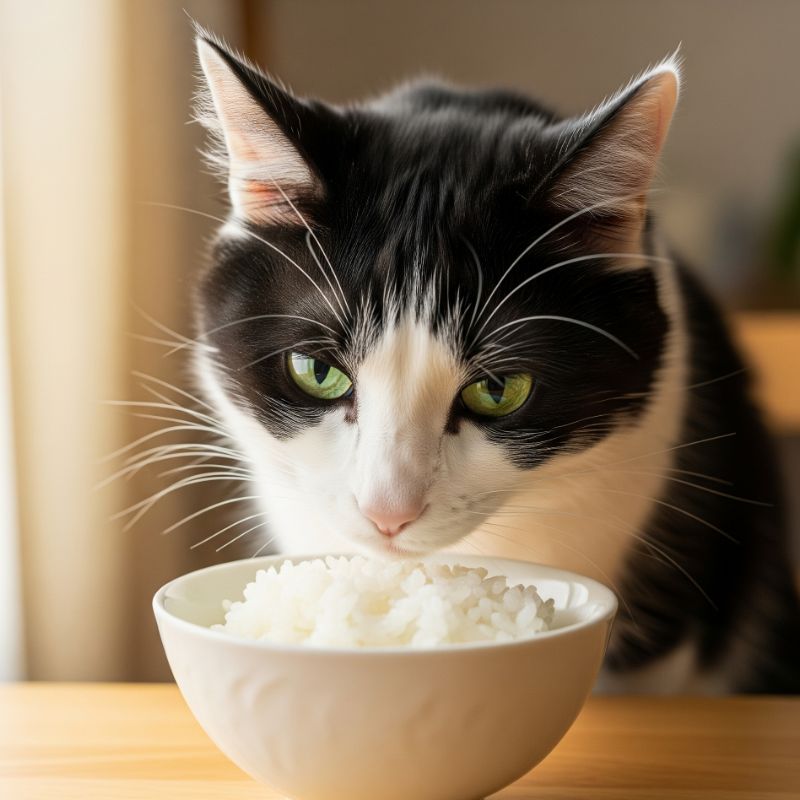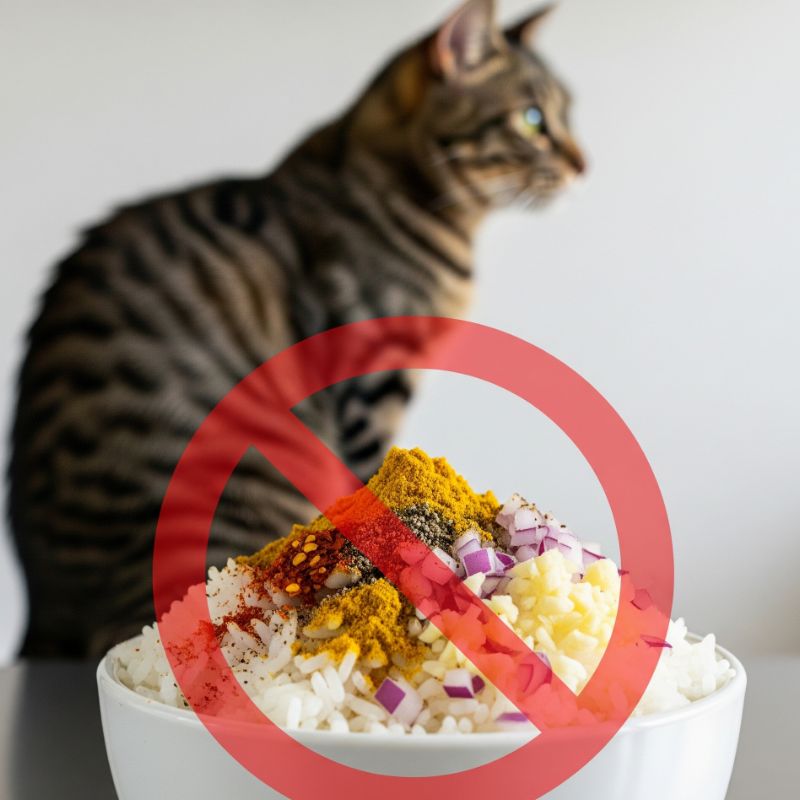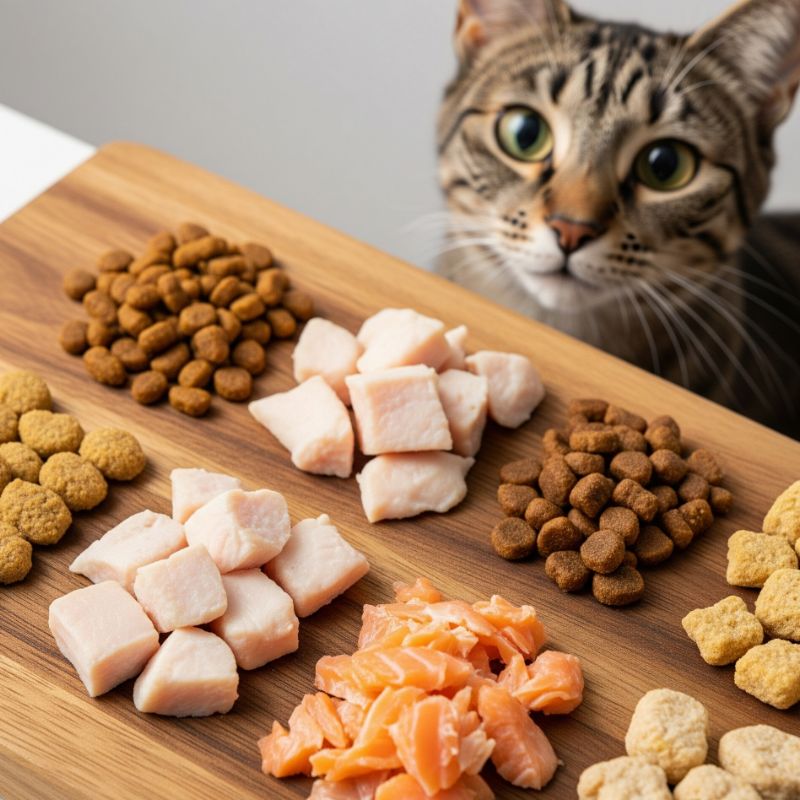You might be preparing dinner or dealing with a cat’s upset stomach, and the question comes to mind: can cats eat rice? It’s a staple food in human diets worldwide, but our feline friends have vastly different nutritional needs. While rice isn’t in the same danger category as some other human foods, there are important rules and risks to understand before you share. This guide will provide clear answers on when rice is safe, when it’s helpful, and when it’s a bad idea.
Can Cats Eat Rice?
Yes, plain, cooked rice is generally considered safe for cats to eat in small quantities. It is not toxic, and most cats can digest it without issue. However, “safe” does not necessarily mean “healthy” or “recommended.” Rice provides very little of what a cat actually needs to thrive and should only be given under specific circumstances, not as a regular meal or treat.
Is Rice Actually Good for Cats, or Just a Filler?
For a healthy cat on a balanced diet, rice is nothing more than a filler. Cats are obligate carnivores, meaning their bodies are designed to derive nutrients from animal-based protein. Rice is a carbohydrate that provides “empty calories” without the essential amino acids, vitamins, and minerals (like taurine) that cats get from meat. It’s a common misconception that cats need carbs, similar to how some owners mistakenly believe the answer to can cats eat dog food is yes, when in reality it leads to nutritional deficiencies.
The Nutritional Value of Cooked White Rice
While not a powerhouse for felines, it’s helpful to see what a small amount of rice contains. Here is a general breakdown for a small serving (about 1/4 cup) of cooked white rice.
| Nutrient | Value / Presence |
|---|---|
| Calories | Approx. 50 kcal (High for a treat) |
| Carbohydrates | High (Main component) |
| Protein | Low / Not a complete source for cats |
| Fat | Very Low |
| Fiber | Low (Can help bind stool) |
What Are the Potential Risks of Feeding a Cat Rice?
Although safe in moderation, there are risks to be aware of, especially if rice is given improperly or too often. The question “can cats eat rice?” has a safe answer only if these risks are avoided.
- Uncooked Rice: Never feed a cat raw, uncooked rice. It is difficult to digest and can absorb moisture in the digestive tract, leading to bloating and severe abdominal pain.
- High Carbohydrates: A diet high in carbs can lead to obesity and potentially increase the risk of diabetes in cats.
- Lack of Nutrients: Relying on rice as a food source can lead to malnutrition over time.
- Added Ingredients: Rice cooked with salt, onions, garlic, or other spices can be toxic and is never safe.
It’s vital to distinguish between safe fillers like rice and deadly human foods. For instance, the answer to can cats eat grapes is a hard no, as they are extremely toxic and can cause kidney failure.
How Should I Prepare Rice for My Cat?
If your vet has recommended rice or you’ve decided to offer a tiny amount, preparing it correctly is essential for safety.
- Choose the Right Type: Plain white rice is the best choice. Brown rice has a higher fiber content which can be harder for some cats to digest.
- Cook It Thoroughly: Boil the rice in plain water until it is soft and mushy. Do not use a rice cooker that adds butter or oil.
- Serve It Plain: Do not add any salt, oil, butter, herbs, or spices. It must be completely plain.
- Let It Cool: Serve the rice at room temperature to avoid burning your cat’s mouth.
Can Rice Actually Help My Cat’s Diarrhea?
Yes, this is the most common and accepted use for rice in a cat’s diet. Due to its bland nature and low fiber content, cooked white rice can help bind the stool and absorb water in the gut, firming up diarrhea. Vets often recommend a temporary diet of boiled chicken mixed with a small amount of plain white rice for a day or two to help a cat recover from a mild bout of diarrhea. This is very different from giving a high-fat food for stomach upset; for example, the answer to can cats eat peanut butter is no, as the fat would make diarrhea worse. You can find more information on bland diets for cats at veterinary resources like the VCA Animal Hospitals website.
What’s a Safe Amount of Rice to Give a Cat?
If using rice to help with diarrhea, it should only make up about 25% of the meal, with the other 75% being a bland protein like boiled chicken. A typical serving would be about one tablespoon of rice mixed into the meal. As a treat, the amount should be even smaller—no more than a teaspoon on rare occasions. Due to the high carbohydrate load, it should never be a significant part of their food intake.
What Are Some Healthier Treat Alternatives?
Instead of relying on a filler like rice, there are many healthier, more species-appropriate treats you can offer your cat. These provide actual nutritional benefits that a carnivore needs.
- Small pieces of cooked meat, poultry, or fish (unseasoned)
- Commercially formulated cat treats that are low in calories
- Freeze-dried meat treats
Even some fruits are safer, though sugary. Asking can cats eat strawberries or can cats eat blueberries reveals options that, while not essential, are non-toxic in small amounts.
Conclusion
So, while the answer to “can cats eat rice?” is yes, the more important question is “should they?”. For a healthy cat, there’s no real reason to add it to their diet. Its primary value is as a short-term, vet-recommended tool to help manage mild diarrhea. By focusing on a high-quality, meat-based diet and offering healthy, protein-rich treats, you’ll be doing the best for your cat’s long-term health.
Frequently Asked Questions About Cats and Rice
Here are quick answers to some common follow-up questions about feeding rice to your cat. This information is for general guidance and does not replace professional veterinary advice.
1. Is brown rice or white rice better for cats?
For cats, plain white rice is better. Brown rice is higher in fiber and contains phytic acid, which can make it harder for a cat to digest and may inhibit the absorption of certain minerals.
2. Can rice cure my cat’s diarrhea?
Rice does not “cure” the underlying cause of diarrhea, but it can help manage the symptoms. Its bland, low-fiber nature helps firm up the stool. If diarrhea persists for more than 24-48 hours, you must see a vet.
3. How much rice is too much for a cat?
Anything more than a tablespoon mixed into their food for a short-term bland diet is likely too much. As a regular treat, even a teaspoon frequently can contribute to unwanted weight gain over time.




